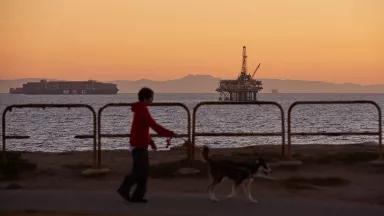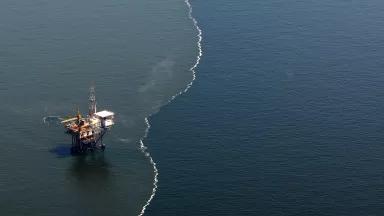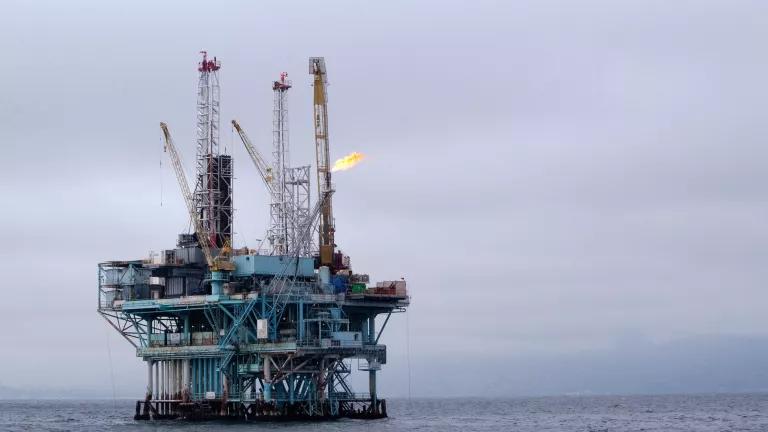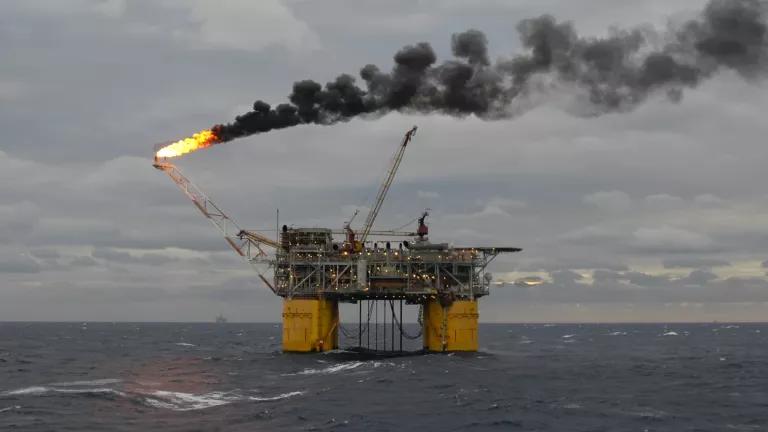Offshore Oil and Gas Leasing—the Next Carbon Bomb?
President Biden’s decision on the next offshore oil and gas leasing program is expected just as polling shows that a majority of voters do not want to expand offshore drilling.
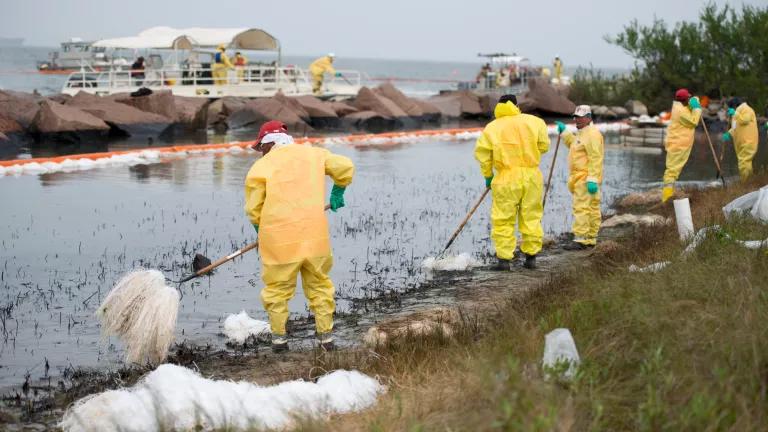
Cleanup workers using pom-poms to soak up an oil spill on Galveston Island, Texas, on April 3, 2014
U.S. Coast Guard
Four months from now, the Biden administration will put out its plan for the next five years of offshore oil and gas leasing. President Biden’s proposed offshore leasing plan could release anywhere from the same amount of carbon emissions as the Willow project to 10 times more, according to the U.S. Department of the Interior’s own projections.
This is hugely significant. The decision about the future of offshore leasing has major climate implications. More leasing means more pollution in our air and waters and puts our coasts, communities, and marine life at risk of another major oil spill.
President Biden’s decision on the next five-year offshore oil and gas leasing program is coming down the pike just as new polling shows that a majority of voters do not want to expand offshore drilling. Across the political spectrum, voters understand that the risks outweigh any perceived benefits, and a proposal to prevent new offshore drilling is more popular than increasing drilling. Moreover, voters overwhelmingly prefer expanding clean energy over expanding offshore oil and gas drilling. Strong majorities of coastal voters, from the Gulf to the eastern seaboard, do not want to increase offshore drilling. Coastal voters, including Republican coastal voters, are concerned about offshore oil and gas drilling’s impacts on coastal communities, marine life, and seafood. Coastal voters overwhelmingly want to prevent new drilling and to see the administration protect marine life and coastlines from oil spills and pollution.
It is abundantly clear that offshore drilling is simply impossible if we intend to maintain a livable planet. Scientists are warning with ever-increasing urgency that we need to drastically cut the carbon pollution that comes from burning coal, oil, and gas. The Intergovernmental Panel on Climate Change (IPCC) has admonished “the pace and scale of what has been done so far, and current plans are insufficient to tackle climate change….We are walking when we should be sprinting.” To do its part, the administration has formally committed to cutting carbon emissions in half by 2030 and for the nation to stop adding them to the atmosphere altogether by 2050.
But new leasing would lock in decades of climate-harming pollution/carbon emissions. It would also lock our children and future generations into depending on dirty energy and fueling the climate crisis when we need to be doing everything we can to minimize it.
We need to reduce—not expand—offshore leasing.
The costs of climate disasters just continue to grow: In 2022, climate disasters cost the United States more than $165 billion. We need to do everything in our power to avert future climate-induced flooding, wildfires, drought, harm to crops and livestock, sea level rise, and other life-threatening risks to people, communities, and wildlife. But our policies are not keeping up.
Bipartisan compromises made to secure passage of the Inflation Reduction Act (IRA) breathed new life into three lease sales: one in Cook Inlet, Alaska, and two massive lease sales in the Gulf of Mexico (Lease Sales 258, 259, and 261, respectively). Together, the three sales could auction off some 73 million acres. Not only did the IRA mandate lease sales, but it created a hostage provision that ties clean energy to oil and gas by requiring that at least one big offshore oil and gas lease happens every year if we want to issue offshore wind leases.
NRDC and partners challenged the Cook Inlet lease sale in December, and in March, we brought a lawsuit against the U.S. Department of the Interior over Gulf of Mexico Lease Sale 259. We are fighting for our ocean, climate, communities, and marine life.
This September, the Bureau of Ocean Energy Management (BOEM) is expected to release a proposed five-year program for federal offshore oil and gas leasing, to be finalized in December. This is the plan that could result in up to 10 times the carbon emissions of the Willow project.
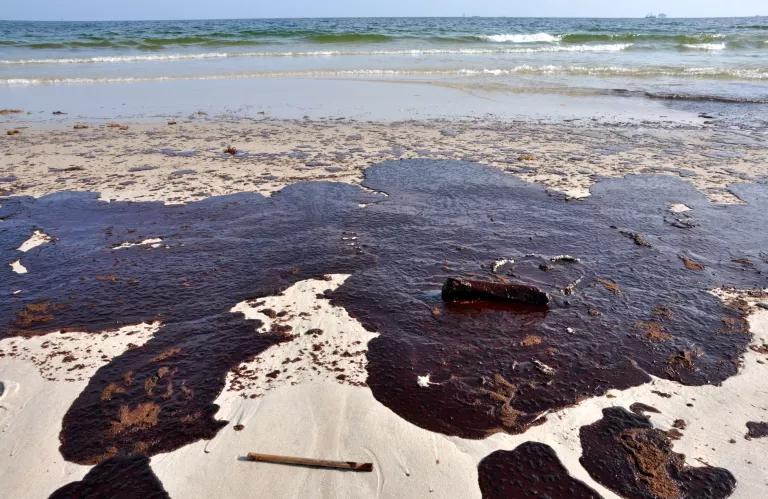
Pools of oil from an offshore spill covering a sandy beach
Danny Hooks/Alamy
The IRA simply does not require “business as usual” oil and gas leasing as some have said. BOEM should use its discretion and authority under the relevant laws to finally rein in offshore oil and gas leasing and its massive attendant climate, wildlife, and community health harms.
As we’ve written before, oil and gas companies don’t need more of our oceans. Big Oil already holds thousands of unused leases to drill on public lands and waters. Right now, the industry holds leases to drill in roughly 11.3 million acres of the Gulf of Mexico, an area that would cover more than half the state of South Carolina.
In fact, the United States has so much oil that we ship it abroad. U.S. oil production is up 10 percent since Biden took office (an average of 12.2 million barrels per day, compared to 11.1 million in January of 2021). Last year alone, industry exported at least 9.1 million barrels of crude oil and refined fuels a day, on average—about three times as much as just a decade ago.
President Biden and his agencies are the stewards of our public lands and waters; they hold these resources in trust for all of us. They have a responsibility to use them in a way that benefits our communities and future generations, which includes tackling the climate crisis.
The next five-year offshore oil and gas program could hardly be more critical for the future of our planet—and it is clear that we can’t afford a carbon bomb larger than the Willow project.


